
Elasmotherium vs Woolly Rhino Prehistoric Beast Battle [S2E15] SPORE YouTube
The woolly rhinoceros ( Coelodonta antiquitatis) is an extinct species of rhinoceros that inhabited northern Eurasia during the Pleistocene epoch. The woolly rhinoceros was a member of the Pleistocene megafauna. The woolly rhinoceros was covered with long, thick hair that allowed it to survive in the extremely cold, harsh mammoth steppe .

TIL Elasmotherium was a wooly, Rhinolike animal, 20 feet in length, that carried a 6 foot horn
1 Giant rhinoceros ( Elasmotherium) Elasmotherium was a gigantic, prehistoric mammal, which is considered to be an ancestor of present-day rhinos due to its enormous horn and genetic similarities to the woolly rhinoceros.
There's Wooly Rhino, and then there's Elasmotherium Naturewasmetal
Template:Infobox Mammal Elasmotherium (meaning, "Thin Plate Beast"), more informally sometimes called the Steppe Rhinoceros, is an extinct genus of giant rhinoceros endemic to Eurasia during the Late Pliocene through the Pleistocene, documented from 2.6 million years ago, to as late as 50,000 years ago, possibly later, in the Late Pleistocene, an approximate span of slightly less than 2.6.

Woolly Rhinoceros 3D Model ubicaciondepersonas.cdmx.gob.mx
6.1K views 2 years ago Dire wolf was walking around in the forest. There, dire wolf found an elasmotherium. Dire wolf tried to attack Elasmotherium, but Elasmotherium fend off the dire wolf..

Elasmotherium vs Woolly mammoth who will win ? YouTube
All Woolly rhino images consistently show a massively deep, hugely convex shoulder hump that extends all the way forward to the back of the head. The hump is so massive that, when the animal is.
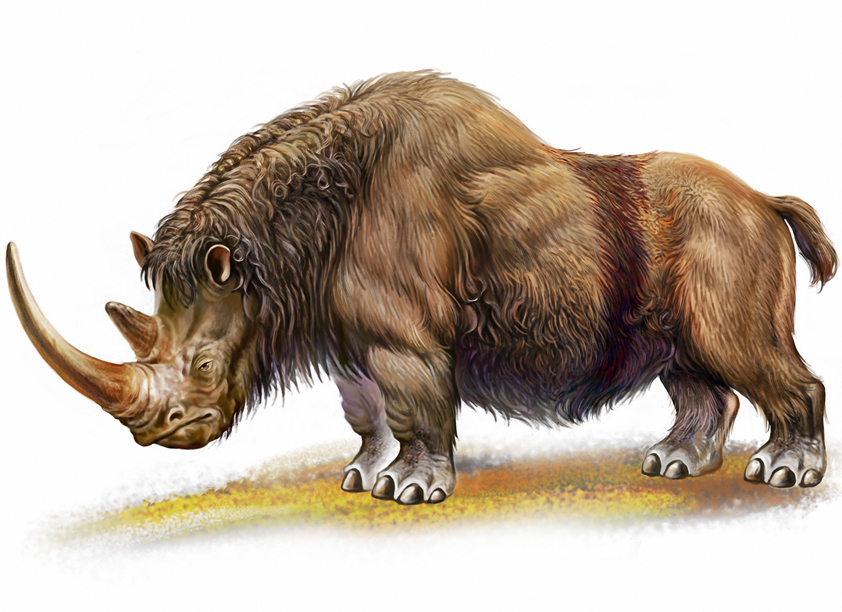
One hairy rhinoceros Hero Concepts Disney Heroes Battle Mode
Creature Comparison: Woolly Rhino vs. Elasmotherium - YouTube 0:00 / 4:03 Per the request of my friend, Simon J, I'm comparing two species of rhinos from the ice age. Enjoy!
:max_bytes(150000):strip_icc()/__opt__aboutcom__coeus__resources__content_migration__mnn__images__2013__09__Rhino_sizes-3385e3a3ddbf4de7acbeba25d70c8c01.jpg)
9 Extinct Megafauna That Are Out of This World
Most of our samples were also enriched in both δ 13 C and δ 15 N compared with the woolly rhinoceros (C. antiquitatis) from within the temporal and geographical range of the Elasmotherium material.
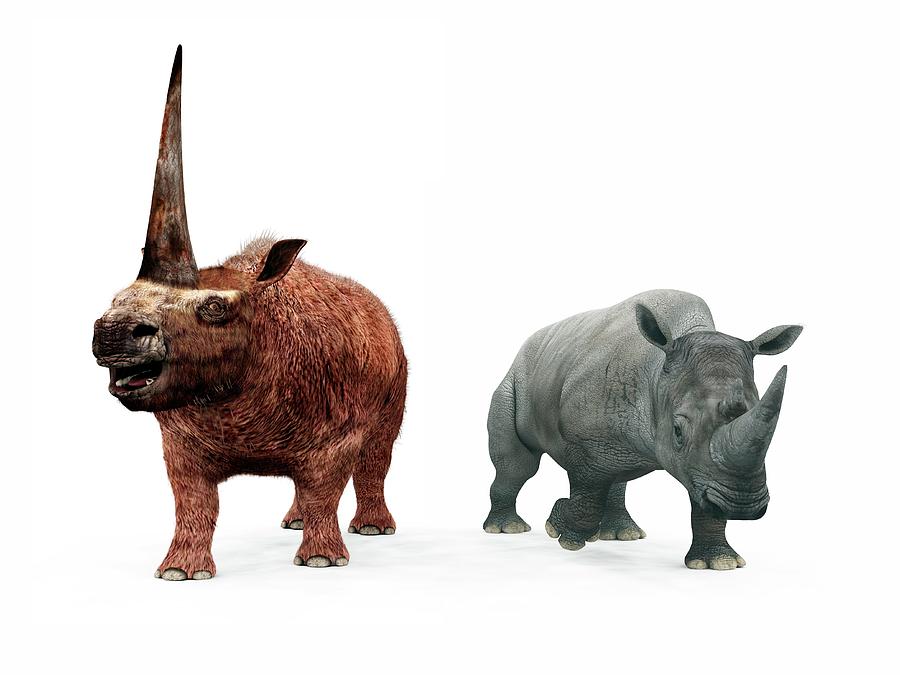
Elasmotherium And Rhino Compared Photograph by Walter Myers
It was a mammal that was related to the wooly rhinoceros, also known as Coelodonta. These animals were approximately 20 feet long and weighed around 4 tons. They walked on all four legs and had a big horn on their nose. This horn was made out of keratin - the same thing that human hair is made out of.

Evolution Series An Army of RhinosLiving rhinos are generally associated with big horns, thick
Five species are recognised. The genus first appeared in the Late Miocene in present-day China, likely having evolved from Sinotherium, before spreading to the Pontic-Caspian steppe, the Caucasus and Central Asia. [3]
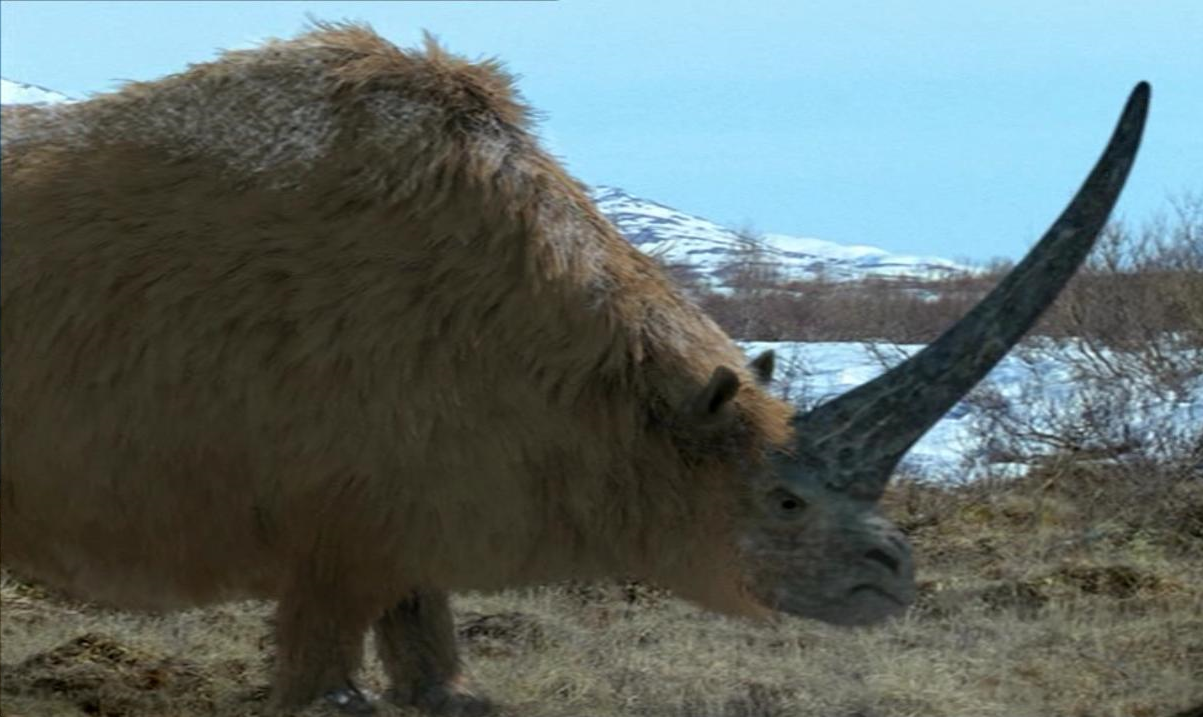
Elasmotherium Walking With... Wiki FANDOM powered by Wikia
The Elasmotherium is a close relative of the woolly rhino, as evident by the fact that both are covered in fur.Like all rhinos, the Elasmotherium was a herbivore, but one thing that separated it from the rhino was the length of its legs. Its longer legs gave it more speed and a horse-like gait. It also possessed an enormous horn on its head, as opposed to the rhino, which had a comparably.
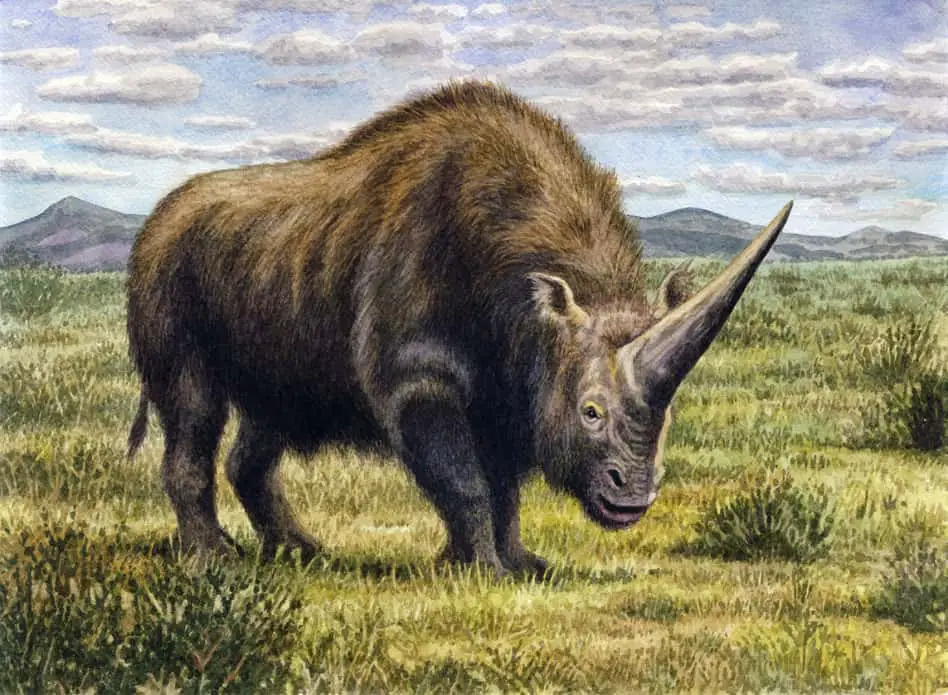
Elasmotherium Dinosaurs Pictures and Facts
Elasmotherium (meaning "thin plate beast") was another prehistoric giant, though at around three metres tall, it was no match for Paraceratherium. Its standout feature? One seriously massive horn.

Mother Rhinoceros Vs Woolly Mammoth Fight to save Baby Rhinoceros Animal Fights Videos YouTube
Eight species were present in Central and Eastern Europe in the Quaternary; five belonged to the genus Stephanorhinus (S. etruscus, S. jeanvireti, S. hundsheimensis, S. hemitoechus, and S. kirchbergensis), one was the woolly rhino Coelodonta antiquitatis, and two species were members of the genus Elasmotherium (E. peii and E. caucasicum). This.

Giant rhinoceros (Elasmotherium) a prehistoric rhino Prehistoric
Chordata Class Mammalia Order Perissodactyla Family Rhinocerotidae Genus †Elasmotherium Scientific Name †Elasmotherium sibiricum Read our Complete Guide to Classification of Animals. Elasmotherium Conservation Status Extinct Elasmotherium Locations Asia Eurasia Europe Elasmotherium Facts Group Behavior Crash Fun Fact
Not a unicorn anymore. In this amazing paleoart, an elasmotherium is depicted chasing away a
Woolly Rhinoceros VS Elasmotherium Srihari🐵🐒 197 subscribers Subscribe 1 No views 1 minute ago Woolly Rhinoceros related to Sumatran Rhinoceros Elasmotherium has one large, long.

Elasmotherium Prehistoric animals, Bizarre animals, Extinct animals
Elasmotherium ("thin plate beast") is an extinct genus of large rhinoceros endemic to Eurasia during the Late Pliocene through the Pleistocene, existing from 2.6 Ma to at least as late as 39,000 years ago in the Late Pleistocene. E. sibiricum, was the size of a mammoth and is thought to have borne a large, thick horn on its forehead.
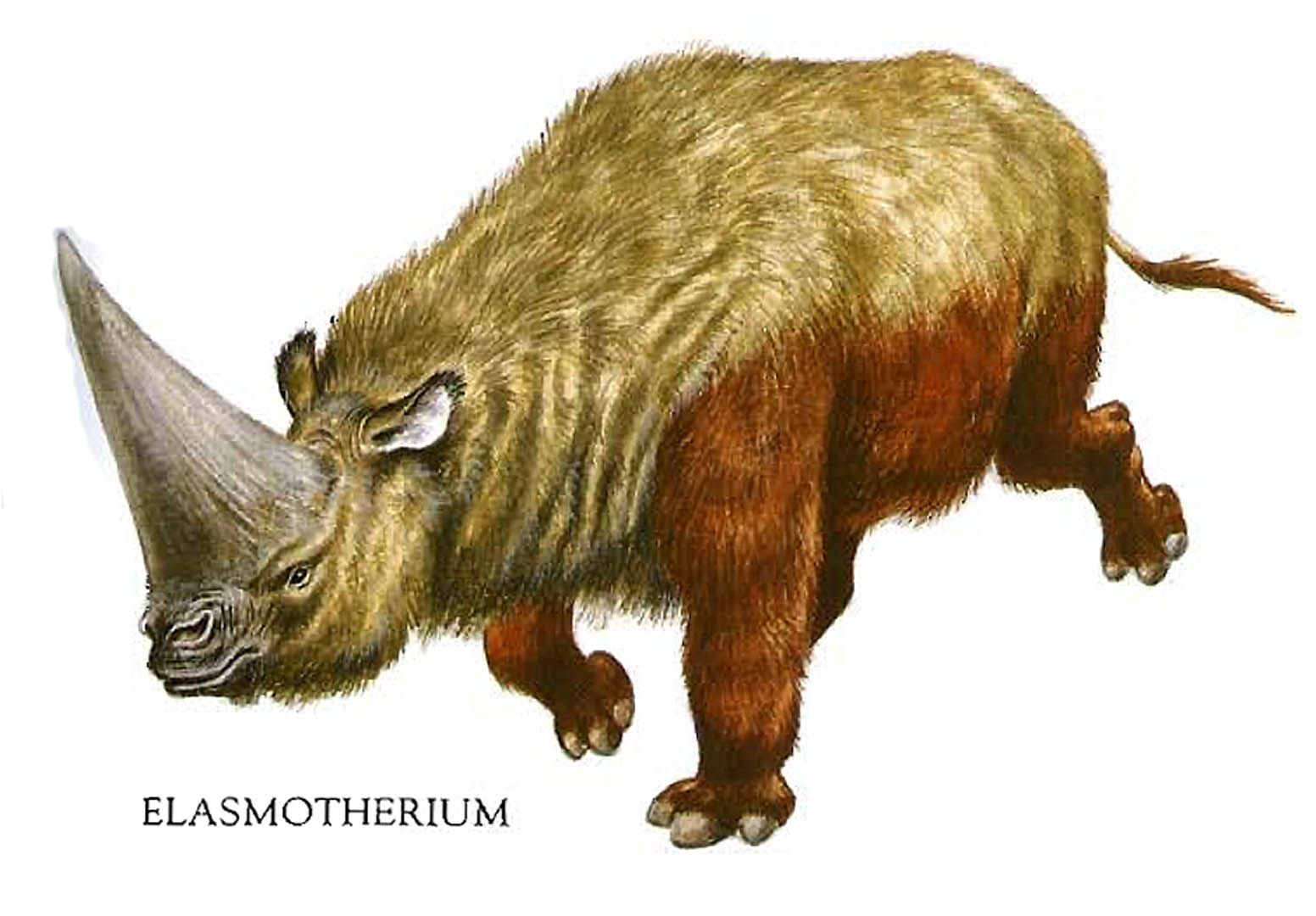
Woolly Rhinoceros Elasmotherium Mammal Like Dinosaurs
One of the most notable differences between the woolly rhino and elasmotherium is their horns. The woolly rhino had two horns on its snout, with the larger one reaching length. In contrast, the elasmotherium had a single horn on its forehead, which could reach up to 6 feet in length.